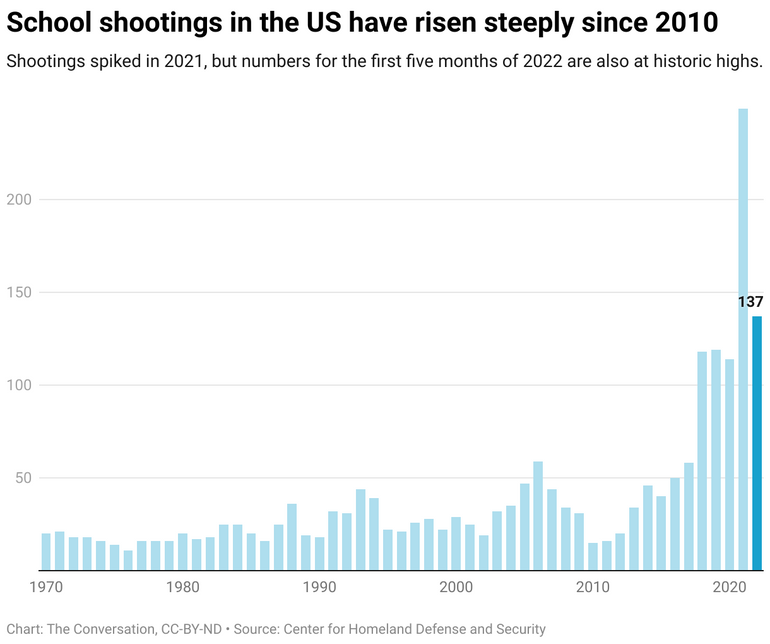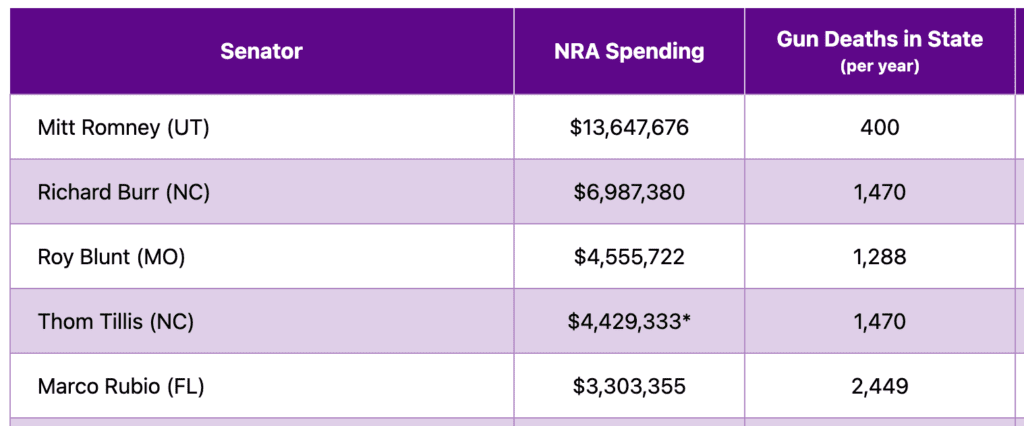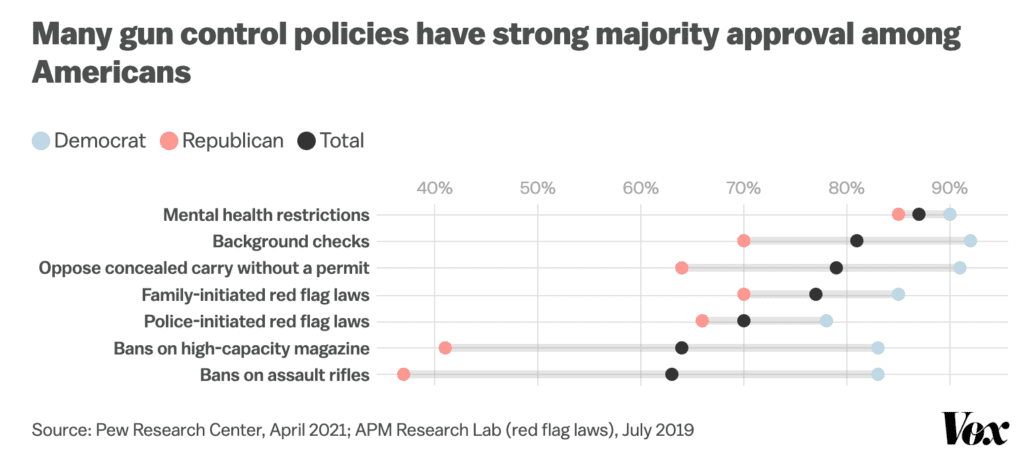On May 24, in Uvalde, Texas, an 18-year-old gunman shot and killed 19 children and two adults at Robb Elementary School. The shooter also injured another 17 people. Amongst the deceased were two teachers, and children aged 9 to 11.
On the morning of the shooting, the gunman – Salvador Rolando Ramos – shot his grandmother in her home, before crashing his vehicle into a ditch near the elementary school and entering the main campus building through an unlocked door. At 11:33AM, he began the deadly attack, using at least 100 rounds of ammunition to shoot into classrooms. Police eventually confronted and killed Ramos, who had barricaded himself inside one of the rooms.
While students inside the building repeatedly called 911 for help, distressed parents and families watched from outside, as local authorities forbid them to enter. Three Uvalde police officers entered the school a few minutes after the shooter, yet the gunman was not killed until over an hour had passed. Currently, police are facing backlash from the local and national community for not only allowing the attack to continue for over an hour, but also for restraining, handcuffing, and tasing parents who begged to enter the school to rescue their children.
The attack at Robb Elementary school reminds Americans – and the international community – of the commonplace nature of mass shootings that have plagued the United States for years.
School Shootings are Familiar to the United States
The school shooting in Uvalde is only one of many school shootings that has occurred in the United States. In fact, as of June 2022, there have been 27 school shootings in the country. Since 1970, the US has experienced 2,032 school shootings, a trend which increased exponentially over time. School shootings have taken place all across the country, in states such as Colorado, Connecticut, Florida, and Texas, demonstrating that gun violence on school campuses is a national threat to students and staff members. Additionally, these shootings have taken place across all types of campuses, ranging from elementary schools to universities, both public and private, further highlighting how this American failure endangers all US students.
The shooting at Robb Elementary School marks the third-most deadly school shooting in US history, and the most lethal since the shooting at Sandy Hook Elementary School in 2012. It is critical to note that the most deadly school shooting in the country’s history took place at Virginia Tech University in 2007. The shooter killed 33 people, and only five years later another gunman killed 20 children and six staff members at Sandy Hook.

Ramos Fit the Profile
Because school shootings have become so prevalent in the United States, investigators, local law enforcement, and the Federal Bureau of Investigation (FBI) have had ample time to characterize the typical psychological profile of school shooters. Most school shooters in the United States are young males ages 18-22, who tend to signal their attack by posting on social media or sending messages to friends alluding to their plans. The shooters also tend to be socially isolated from their peers, and show previous signs of aggression towards people, animals, or both.
In numerous ways, Ramos fit the expected profile for a school shooter almost perfectly. He turned 18 years old just a few days before the attack, posted images on social media showing off guns he had on his 18th birthday wishlist, and recently lost his job, all while no longer attending high school. Ramos also had a violent past. Reportedly, he had a habit of driving around his neighborhood, firing at random people with a BB (non-lethal) gun.
Keanna Baxter, a close friend of one of Ramos’ past girlfriends, told interviewers that “he would try and fight women. He would try and fight anyone who told him no — if he didn’t get his way, he’d go crazy. He was especially violent towards women.” Baxter’s description of Ramos’ threatening behavior bears a resemblance to claims made about Ramos’ use of live streaming and social network application Yubo. Multiple girls who were approached by Ramos on the platform reported his threats to kidnap, rape, and sexually assault them.
Ramos was also more explicit about his intentions to commit the school shooting on Facebook, where he wrote “I’m going to shoot an elementary school” shortly before beginning the massacre.
Thoughts and Prayers
Following deadly school shootings, politicians frequently send their “thoughts and prayers” to families and loved ones affected by the incident.
After the shooting, Republican Senate minority leader Mitch McConnell tweeted “the entire country is praying for the children, families, teachers, and staff and the first responders on the scene.” Others, such as Senator Ted Cruz stated “we’ve seen too many of these shootings. No parent should have to bear the pain of burying their child. We need to come together, as one nation, and support Uvalde as they try to heal from this devastating loss.” Nonetheless, Cruz downplayed the implications of the shooting, controversially stating that gun violence was “not a political problem,” perhaps alluding to US politicians’ lack of willingness to take sincere action against gun violence.
Despite this, the persistently high incidence of school shootings throughout the years suggests that preserving the status-quo will not offset this violent trend.
A Problem Unique to the US: What is the Cause?
In reality, the secret to cracking down on mass shootings and gun violence in the United States is ambiguous. Many Republican politicians blame the worsening mental health crisis in the country for these violent outbursts. Texas Governor Greg Abbott stated “We as a state – we as a society – need to do a better job with mental health. Anybody who shoots somebody else has a mental health challenge. We as a government need to find a way to target that mental health challenge and to do something about it.” When looking at the other side of the political aisle, school shootings are more often attributed to a lack of gun control measures. For example, Beto O’Rourke, the Democratic gubernatorial candidate running against Governor Greg Abbott, has expressed a need for background checks for gun sales, longer waiting periods before purchasing a firearm, and raising the minimum age to purchase a gun from 18 to 21 in the state of Texas. Another interesting approach could involve the nationwide implementation of licensing procedures, such as the ones implemented in Massachusetts. In this respective state, such procedures have significantly mitigated the prominence of gun violence.
G.O.P. and the NRA vs. Public Opinion
G.O.P. (Republican) lawmakers have been facing backlash, as they could appear to have financial reasons to blame school shootings on mental health, as opposed to relaxed gun laws. The National Rifle Association (NRA) serves as a significant lobbying group for Republican candidates and their respective campaigns. In 2019, the NRA spent $3.22 million on various political campaigns of senators against stricter gun legislation, and another $2.20 million in 2020.
North Dakota Senator Kevin Cramer shows the correlation between attitude towards gun reform and NRA campaign financing. In an interview after the Uvalde shooting, he was asked how his voters would react if he were to demonstrate a desire for gun control reform. In response, he stated that “most would probably throw me out of office.” Through direct and indirect funding, the NRA has given Senator Cramer over $13,000 for his campaigns. Other politicians have been less explicit in highlighting this connection. When a reporter asked for his stance on a possible ban on AR-15s, Florida Senator Marco Rubio said “the truth of the matter is these people are going to commit these horrifying crimes. Whether they have to use another weapon to do it, they’re going to figure out a way to do it.” Senator Marco Rubio has received over $3 million from the NRA.

*Asterisk indicates updated 2020 election cycle funds
While there are differing rationales amongst politicians as to why school shootings are still so widely prevalent, the American public seems to be less divided on measures that should be taken to prevent shootings. According to a recent Morning Consult/Politico survey, 84% of voters support universal background checks for gun purchases, indicating a disconnect between public desire and actual legislation.

Looking Into the Future
While some lawmakers have hope for the future, other politicians are not as optimistic. Maine Senator Susan Collins stated that her bipartisan group of Democrats and Republicans was making “rapid progress” towards gun reform. President Joe Biden, on the other hand, said in an interview that he is “not confident” that lawmakers will find success in passing gun legislation.
Meanwhile, the public is responding to the Uvalde incident through protests and demonstrations. The second “March for Our Lives,” a student-led movement calling for gun reform, is set to take place in Washington, D.C. on June 11.
Featured image by: Jordan Vonderhaar for Getty Images.







